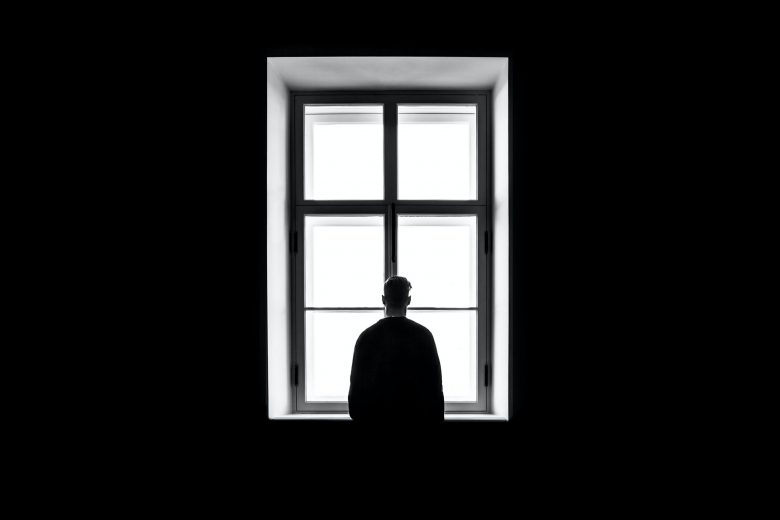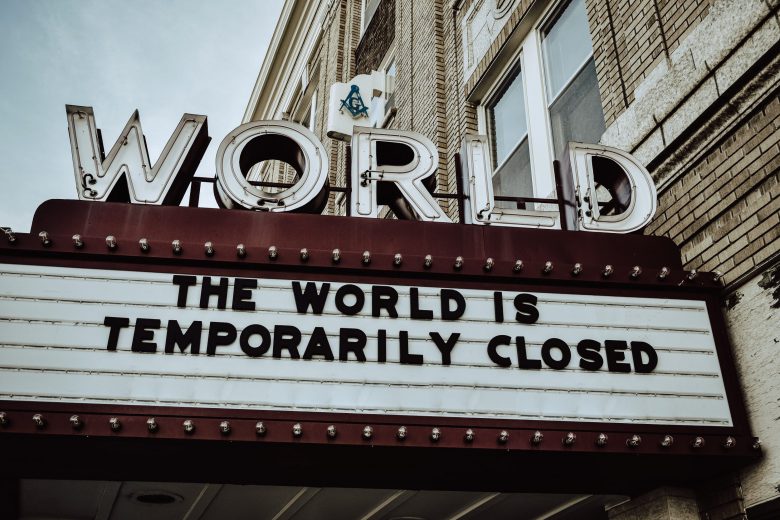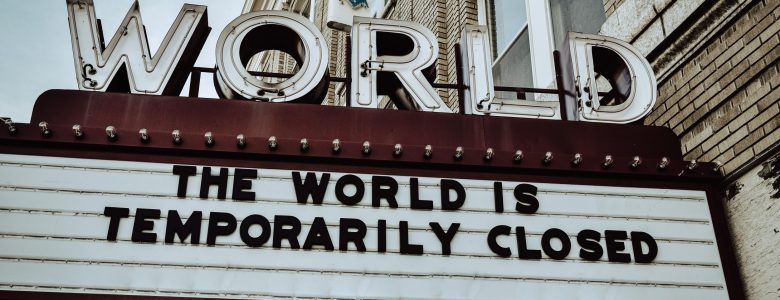Shaul Bar-Haim explores how Coronavirus affects our experience of time.
Philosopher of science, Bruno Latour suggests that the current pandemic could be seen as a ‘dress rehearsal’ that ‘incites us to prepare’ for the bigger challenge of the climate emergency. His conclusion, however, is that it is difficult to think of the two events together. Whilst the pandemic requires a collective human effort against the virus – an effort which often creates new forms of solidarity between different groups of people – the climate crisis demands a human struggle against other humans, ‘those who make war on us without declaring war on us’, as he puts it. But he leaves us with the hope that the suspended time many of us have spent at home might ‘convert’ people to fight not only against the virus, but also against climate change as a whole, for the sake of the planet: ‘a time of Lent, whether secular or republican, can lead to spectacular conversions… Let’s respect this long, painful, and unexpected fast’.
What is the nature, then, of this current ‘unexpected fast’? What is the temporality of the new ‘stay at home’ order? And in the meantime, until the ‘dress rehearsal’ is over – what are we to do? For many people – at least, those who are in a ‘white-collar quarantine’, as the New York Times recently called it – the answer is simply, waiting.
Waiting is one mode of time that Lisa Baraitser describes in her book Enduring Time as ‘chronic’. For Baraitser, a ‘chronic time’ is an ongoing period of time in which human bodies are required to stay side by side for a long time, very often with no clear ending (think of parents spending a night with a teething crying baby, or of ‘end of life’ care). It is an extended form of temporality, a duration; accumulative rather than revolutionary (i.e., one big moment); not a rupture, but precisely part of an ongoing temporality which, within the medical context, entails pain and patience without any clear end. In fact, here lies the main paradox of corona-time: while on the surface it looks like a classic ’big event’ that might change the course of history altogether, in ‘everyday life’ the virus is often experienced as an almost invisible illness that demands everyone to endure, stay at home, and wait. Thus, the notion of ‘chronic time’ might be one way to think of what comes next, namely the old-new world of a post-pandemic time.
Staying is another mode of chronicity. Indeed, the slogan, ‘stay at home and save lives’ might be viewed as a rare example of public acknowledgement of the challenge of this ‘non-heroic’, passive, and yet absolutely crucial mode of ‘chronic time’. But this initial request to ‘stay home’ gradually turned into a pressure to ‘use’ our free time wisely in public discourse, and for some produced an anxiety around ‘wasting time’, by staying at home. As if time is a resource which is not in our possession and therefore, we have no right to waste it without the permission of the owner. Indeed, alongside the demand to stay at home to save lives, the message is that there is another goal that we should keep in mind, which is that of ‘saving the economy’. Prioritizing the economy is not to be dismissed. Of course, this is another form of ‘saving life’: without work, people already struggle to make a living in a very literal sense. And yet, the demand to ‘open the country’ in the UK, US, and elsewhere comes very often from big employers – the owners of big companies, the ‘owners’ of many people’s time, a time which is now – temporarily or not – out of their hands.

Credit Sasha Freemind, Unsplash
In defense of an anachronistic mode of time
Baraitser is interested not only in ‘chronic time’ but also in ‘anachronism’, namely, ‘what is “against” time, what stubbornly remains within the present as the no-longer-new, the out-of-date, the obdurate idea, practice, or thought’ (p. 6). Thus, the time of psychoanalytic treatment is paradigmatic in this respect. One can easily describe spending hours upon hours for many years free associating on a couch in the presence of another person as an ‘anachronistic’ ‘waste’ of time. The opportunity, however, to waste time like that is so rare (and expensive) that it allows an ‘anachronistic hope for a form of recovery from an illness never quite articulated [and] never fully known’ (p. 19). It is this very anachronicity that turns such ‘wasted’ time into a threat to other modes of popular treatments of the neo-liberal age, such as Cognitive Behavioral Therapy or psychoactive drugs. The latter play a major role in our society in shaping ‘functioning’ bodies and minds precisely because they can be ‘effective’ in a relatively short amount of time, and therefore can ensure that time is not ‘wasted’ due to a mental crisis.
Paradoxically, although the current pandemic is indeed a period of ‘chronic time’ on a massive scale, it does not necessarily make ‘anachronistic’ psychoanalysis more fit for purpose than other forms of treatment. Psychoanalysts and psychotherapists have already pointed to the new phenomenological as well as technological challenges that make their work much more compromised in the current situation. But they are fighting the right war because they know that time is precisely what they have to offer to their patients. Psychoanalysis is guided by the idea that one is in possession of one’s time and therefore has the right to waste it as much as one likes. Indeed, defining what ‘wasting time’ is could be one way of owning one’s time, as well as forming one’s sense of identity. That is what makes this anachronistic medium, psychoanalysis, so relevant in the current crisis of chronicity and care. A bit like the virus itself, the duration of the psychoanalytic treatment is ‘planned as unlimited’, to use the words of the late Italian psychoanalyst Elvio Fachinelli.

Credit: Edwin Hooper, Unsplash
‘What might it mean to deliberately try to think about staying, inertia, lack of the flow of time, lack of obvious forms of action or psychosocial change, precisely as a way to understand care, and for care to specifically and paradoxically be understood as itself a mode of change that requires time not passing?’ Baraitser asks. Think for instance of the experience of staying next to a dying body – this mode of action which can be perceived as passive because it entails the acknowledgment that ‘nothing can be done’ to save a loved one, or at least nothing can be done by the person who is doing this ‘staying next to’. The coronavirus is a case in point here, because staying alongside loved ones who are dying risks the danger of being infected and is therefore forbidden. Thus, this invisible work of ‘staying’ becomes so invaluable – precisely because it is impossible.
But there is another aspect to ‘corona-time’; this is the relatively long period that the virus can stay in our bodies without producing any signs of its existence. Many people are living in a mode of waiting for the virus to give them a sign that it occupies their bodies. In most cases the sick suffer only from mild symptoms, which with a lack of testing could point to anything, from flu to an anxiety attack. Even in severe cases, people often suffer for several days from quite mild symptoms before the situation suddenly gets worse. Indeed, the concept of ‘mild symptoms’ is quite dubious, as not only it does not reflect many people’s experiences of the illness, but also, as Felicity Callard tells us from her firsthand experience of suffering tremendously while still being considered as a ‘mild’ case,
One does not know, at the time, where [symptoms] might lead: ‘mild symptoms’ may rapidly worsen after several days. The mild is always potentially or not-yet severe. For many, the present in which the Covid-19 illness experience unfolds is overshadowed by the horror of a potential, imminent, unknown and frightening future.
This chronic time of COVID19 could be located precisely in-between this not-that-serious, mild, monotonous waiting, on the one hand, and the totally immediate lonely, isolated, suffering body that cannot even rely on another close person to stay next to them when they are dying. The time of COVID19 is, then, a chronic time of ‘waiting’ that can turn into an unpredictable time with only two options in its most severe cases: lonely death and survival.
Is this deadly waiting also a dress rehearsal? A dress rehearsal for what?



